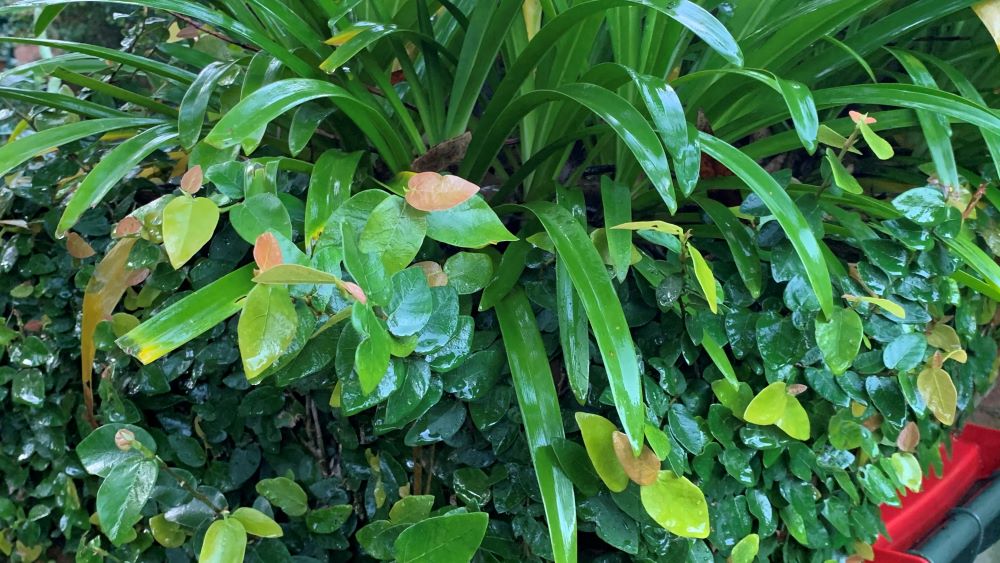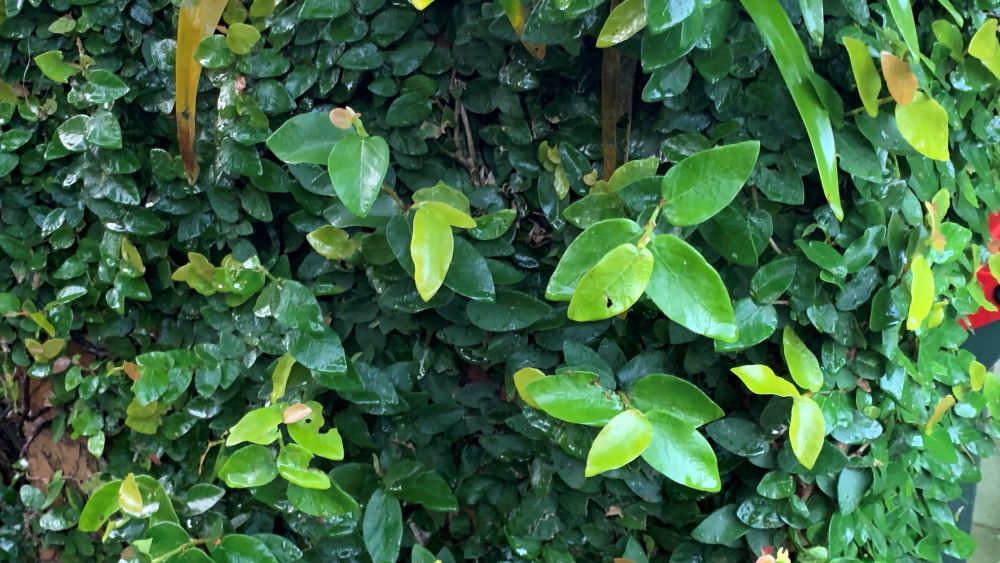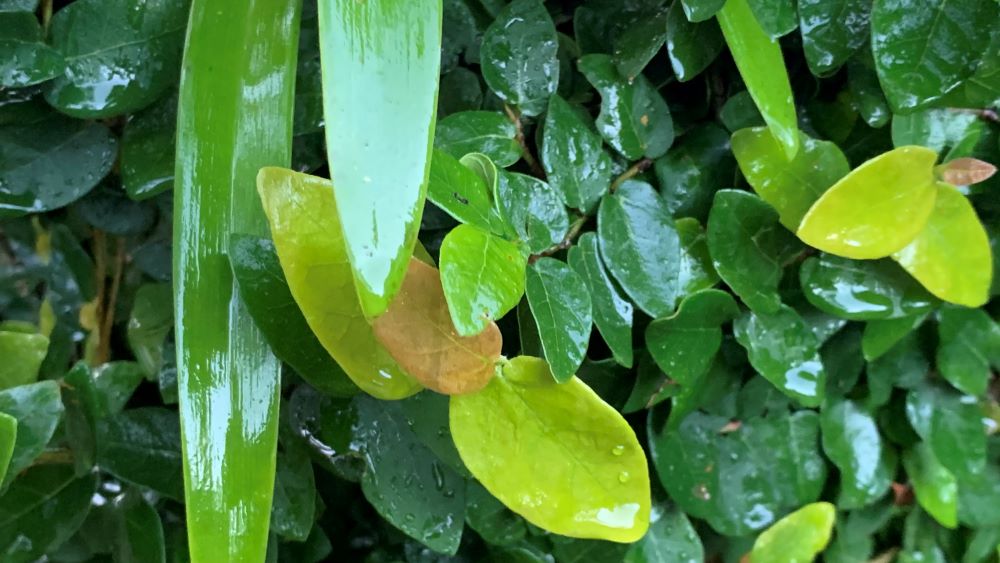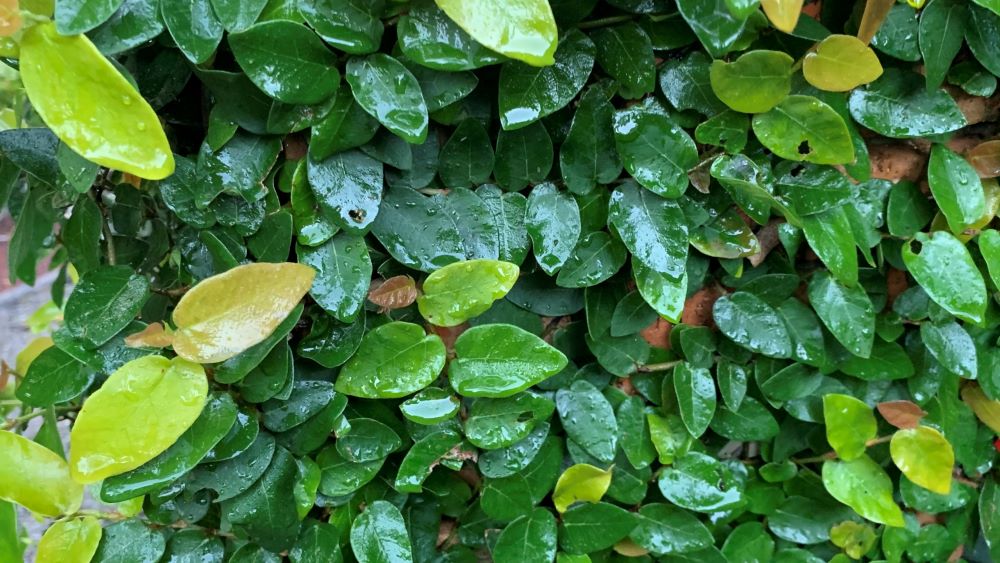Creeping fig or Ficus Pumila are a great climber, a nice way to cover up a bare wall or to add more green to your space. There are lots of species of ficus but creeping fig grow in a low profile close to walls and climb readily.
Creeping figs can end up dying if they experience extended periods of low humidity, heavy soil, hot sunlight, a lack of water, too much water, frost pest attack or very cold climates. This article will explore why creeping fig can die and how to fix each problem.

Ficus Pumila – Creeping Fig
Creping fig are native to Asia and will grow well in hanging pots or up walls, or in terrariums. They will grow indoors or outdoors and can be pruned back hard to keep it neat and under control. They will grow back quickly with new growth and fresh leaves in spring and summer if they get the light and water they need.
The sap of the creeping fig can be irritating to pets and people so wear gloves when you are pruning and keep the sap off your skin. Plant it in an area where your dogs and cats won’t chew on it. Take care where you plant the fig because it can discolor or damage rendered walls or walls with paint.

It can get out of control and become and invasive weed. Make sure you plant it in an area where it can’t get away because it can quickly take over natural landscapes in the right climates.
Top causes of creeping fig dying and how to solve them
Here are the top causes of a creeping fig dying and how you can solve them. Check the list to see if any of these are affecting your plant.
1. Frost
Creeping fig are not frost hardy and heavy frosts can cause damage to the stems and leaves. The frost can burst the cells of the leaf, causing the leaf edges to turn yellow and brown. If enough of the leaf and plant if affected, then the whole plant can be killed.
Solution
If your creeping fig has been damaged by frost you can help it to recover. Water it deeply if the soil is dry and leave the damaged leaves on the plant if frosts are still around. These damaged leaves will help to protect the healthy ones.

Once the weather has warmed in spring, you can prune away the damaged leaves and give the plant a feed of pelleted chicken manure. Water the plant with seaweed solution to help the roots to strengthen and the plant to recover.
3. Lack of humidity
Creeping fig loves a tropical climate with warm weather, high humidity and lots of rainfall. If you live in a dry climate, an extended period of low humidity can dry out the plant and cause it to slow its growth or even die.
Solution
If you live in a dry region or have had a particularly dry period, then it is important to regularly and deeply water your ficus. Water it at the base of the plant, 2-3 times per week over dry periods or until the soil is thoroughly wet.
Indoor ficus will benefit from an indoor humidifier or you can leave a tray of water with pebbles near the plant. Group your ficus with other plants to create a humid microclimate and they will thrive.
4. Hot sunlight
Creeping fig are tough plants but can suffer if they are exposed to hot sunlight. Hot afternoon sun can burn or even kill the plant if they are exposed to this over a period of time. Sunburn usually looks like brown edges on the leaves which will not recover.

Solution
Once the hot sunny days have passed you can prune off the damaged leaves. Don’t prune until the weather has cooled as the damaged leaves will protect the fresh ones. Give your creeping fig at least 6-8 hours of indirect sunlight. Shade from overhead trees, verandahs or screens work well.
5. Heavy soil
Creeping fig growing in heavy soils can suffer and even die over a period of time. Creeping fig likes free draining soil and heavy soil can limit the amount of oxygen, water and nutrients available to the roots.
Solution
Repot potted creeping figs into fresh, premium potting soil to allow their roots to get the water and nutrients they need. For ficus already established in the ground, top dress their root zone with compost and cover this with bark mulch.
Worms and soil bacteria will gradually mix the organic material through the soil to feed the plant and add more oxygen.

Dig through aged compost and cow manure before planting new creeping figs in heavy soil. While clay soil is full of nutrients, adding organic matter will encourage worms and soil bacteria who will make the nutrients easier for the plant to absorb.
6. Lack of water
Creeping fig plants that lack water can dry out quickly, develop yellow or brown leaves and can die if they are not watered well. Ficus likes to have regular water while allowing the soil to dry slightly between watering.
Solution
Check the soil with your finger or a popsicle stick. Stick it in the soil 2 inches down and if it comes out dry then your ficus needs more water. Deep water the plant and check it in 2-3 days to see if it needs watering again. Add seaweed solution to the water to help the roots recover fast.
7. Too much water
Creeping fig plants that are given too much water can develop fungal growth on their roots or root rot. This fungus can kill the root system, stopping the plant from absorbing water and nutrients.
Solution
Avoid leaving potted fig plants sitting in water, do not let the roots sit in water in a pot tray and make sure you lift the pot with pot feet or rocks. Very overwatered ficus can be repotted in fresh potting soil. It is important to do this if there is excessive mold on the surface of the soil.
To help ficus growing in the soil to recover from overwatering, cover the root zone with 2-3 inches of bark mulch which will help to disperse extra rainfall.

8. Cold climates
Cold climates can cause creeping figs to slow their growth and can even kill the plant if the weather is cold over a period of time. They love tropical weather with warmer winters, rainy summers and higher humidity.
These plants can grow indoors in cooler climates near a bright window. Allow the plant to have lots of leaf coverage if you live in a climate that gets cold winters. These excess leaves can be cut back in spring to make way for new growth. Lots of leaves will protect the plant from frosts and help it to survive a cold winter.
9. Pest attack
Pests can attack creeping fig and if they are left unchecked they can eventually kill the plant. Pests that reproduce fast and suck the suck from creeping fig include aphids, mealybugs, scale and white fly.
Spray the plant with diluted neem oil or eco oil to treat the bugs quickly. This will help the plant to recover faster before the sap sucking bugs can kill the plant completely.
10. Need repotting (has outgrown their space)
A creeping fig that needs repotting or has outgrown the space will suffer and can die if it not give the space or nutrients it needs. If the plant is developing brown leaves or stems for not other reason, they it is time to give it more space.
Repot plants that are suffering into new potting soil with added slow release fertilizer. You can use a general potting mix for these plants that drains well.
Creeping Fig Dying | Summary
Dying creeping figs can be saved if the problem is caught early. They love tropical, warm climates with protection from the hot afternoon sun, lots of humidity, regular water and well-draining soil. You can prune them regularly in spring when they are growing fast.
Leave extra leaf growth on the plant to protect it if you suspect you will get frosts or very cold weather. Creeping figs are hardy and a great way to cover a wall or screen with green.
Happy growing.
I am an accredited practicing dietitian, experienced gardener and a dedicated cook. I love writing and sharing my experience so you can learn from my successes and mistakes.
